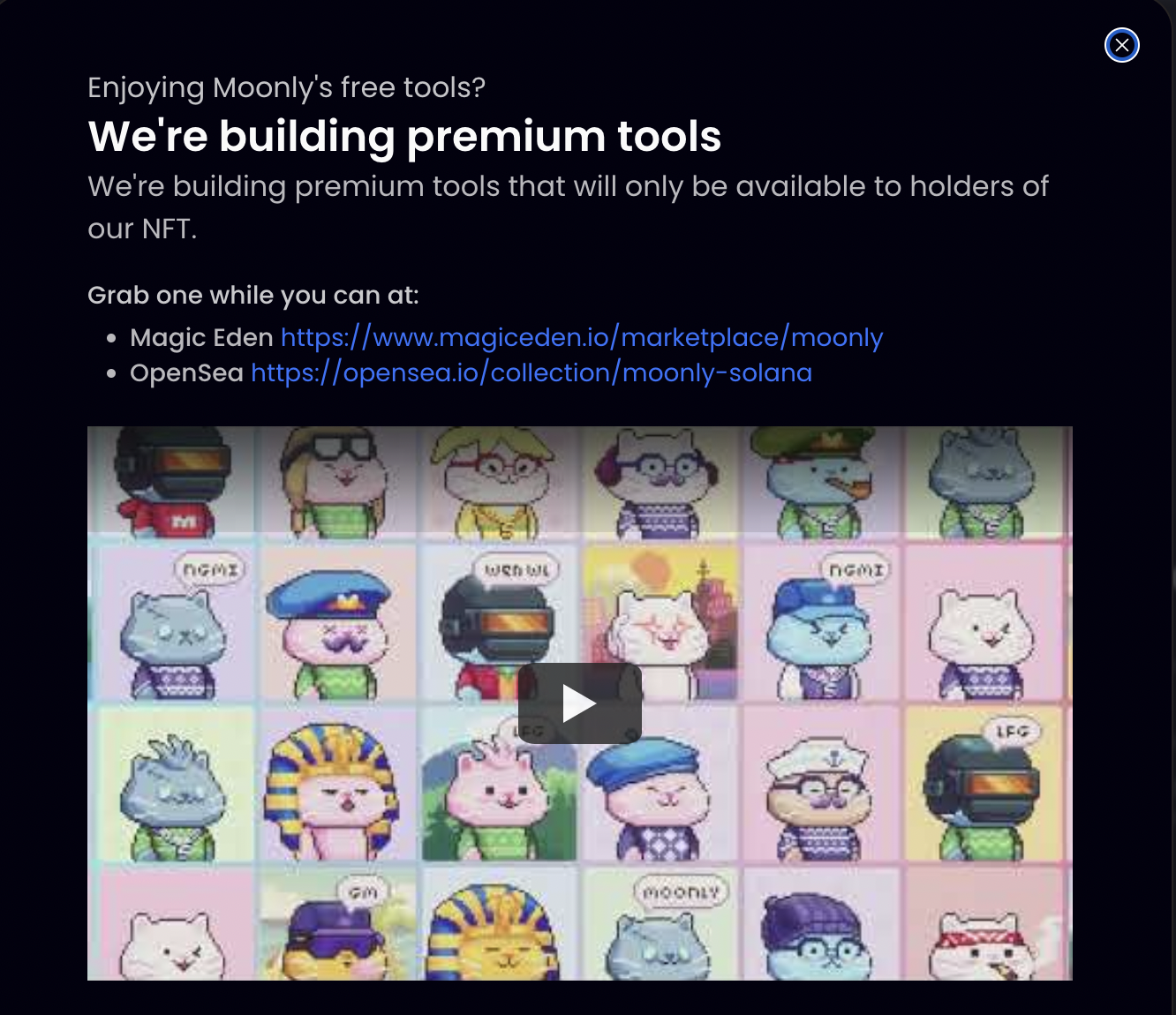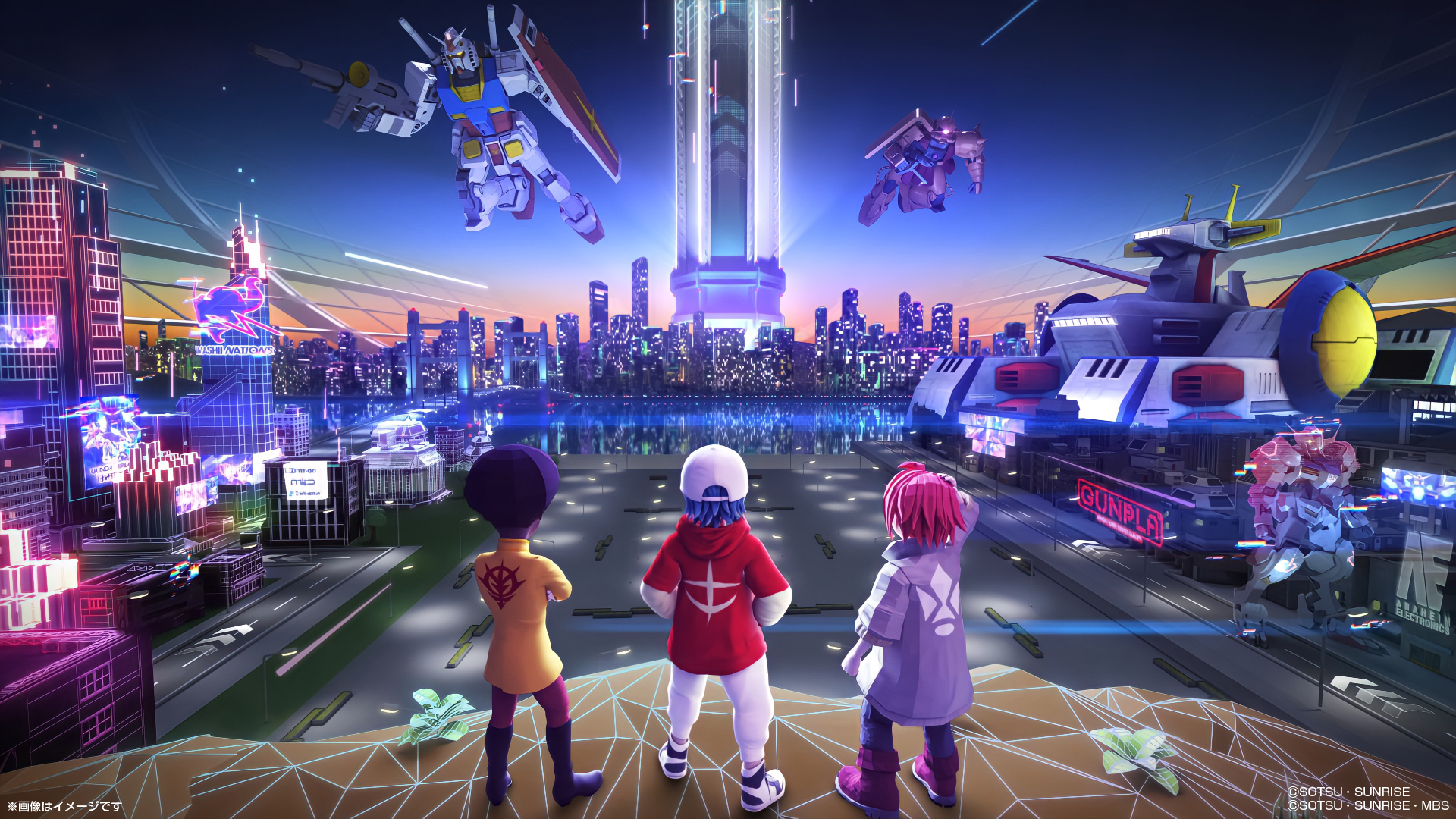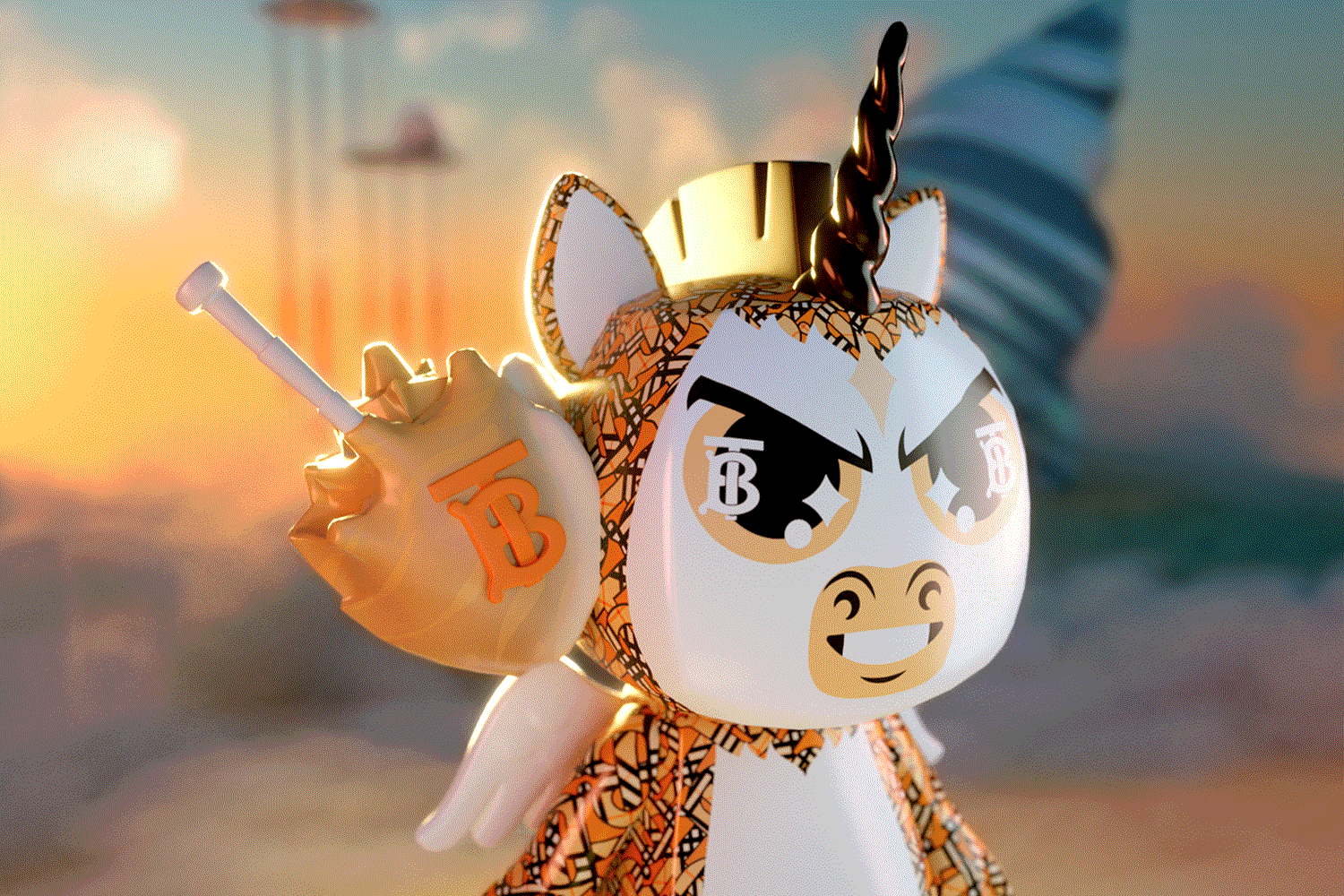Special thanks to AntiAntiNFTs Club for the insights and contributions on this research.
One of the unique features of the most recent crypto bull cycle was the explosion in popularity (and valuations) of NFTs. Like many digital assets, the face-melting price action of top projects and celebrity one-of-ones attracted an army of speculators and rug-pullers. While the headline-worthy sales arguably did the most to increase public awareness of NFTs, they also had quite a negative effect on public perception.
To this day, many have written off NFTs as memes— A viral but fleeting joke with no functional value, and it isn’t too hard to see why. Memes have played a huge role in crypto culture, and the rise of NFTs (especially generative PFP collections) share some similarities with memecoins. Let’s first take a moment to understand this point of view before proving why this is ultimately a misconception.
What is a memecoin?
Memecoin is an unofficial (slang) category of fungible tokens with little to no legitimate purpose or utility other than their potential for “pump and dump” schemes. These create parabolic price rises (sometimes 1000% or more) in the short term followed by devastating crashes, and in most cases, the coins never recover. Devoid of any fundamentals, speculators will instead bet on tokens with the most meme-worthy names or brands. Popular memecoins in the most recent bull cycle included Safemoon, Cumrocket, Shiba Inu, and, of course, Dogecoin.
By far the most persistent memecoin, Dogecoin was famously created as a joke and adopted the popular shiba inu dog meme as its brand image. A big fan and sharer of memes on Twitter, Elon Musk played an outsized role in the success of Dogecoin this cycle; each of his tweets about the token caused the price to pump 20% or more.

Figure 1: Elon Musk tweets about Dogecoin and prices immediately jump
Trading highly volatile memecoins is akin to gambling at the casino, hoping to get lucky and hit the next 10x gem. But buy too late in a trend or hold on for too long and you’re bound to end up providing exit liquidity for whales and other traders. Without legitimate teams or roadmaps, 99% of memecoins inevitably go to zero.

Figure 2: What are meme coins? (Source: Crypto.com)
NFTs - General Theory
NFTs (Non-fungible Tokens) are unique cryptographic tokens that exist on a blockchain and cannot be replicated. While most associate NFTs with digital art, they can also represent real-world items like physical art or even real estate. "Tokenizing" these real-world assets makes buying, selling, and co-owning them more efficient while reducing the probability of fraud.
NFTs aren’t actually new to early adopters of blockchain technology, but 2021 was the first year they attracted mainstream attention after popular digital artist Mike Winkelmann (aka Beeple) sold The First 5000 Days for a whopping $69 million, making him one of the most valuable living artists in the world. Since then, major celebrities from Snoop Dogg to Jimmy Fallon have minted and/or bought NFTs, further increasing awareness.
As the public becomes more aware, NFT trading volume has seen a steady increase. According to the data from IntoTheBlock, the total volume traded in NFTs recently exceeded 22 million ETH or $65 billion in aggregate value.

Figure 3: Total Volume Traded by NFTs
Specifically, IntoTheBlock’s year-to-date chart shows that the global trading volume of NFTs grew from $16.94 billion on January 1, 2022, to $63.49 billion on June 22, an increase of 274.8% just in the past year. NFTs have made such an impact on the zeitgeist that the CollinsDictionary named ‘NFT’ the word of the year in 2021. From fine art auctions to blockchain gaming assets, NFTs became a hot topic of conversation— One that many no-coiners got tired of hearing about.
The Memeification of NFTs
Searching "NFT" on Google yields an endless stream of articles focusing on the astonishing valuations of top NFT projects. With two of those being Yuga Labs’ Bored Ape Yacht Club and Crypto Punks, both PFP collections of questionable artistic merit, it's no wonder so many people overlook the technological innovation and assume NFTs to be another form of meme token. After all, there are some similarities:
- High volatility: Any celebrity / influencer could tweet about a meme token or NFT collection and send its value soaring.
- No utility: Most NFT collections have no functional utility beyond their value as a collectible.
- High risk, high reward - There is a high degree of luck involved in attempting to flip NFTs; similar to memecoins, it is akin to gambling, and the vast majority of people who attempt it lose money.
- Speculative bubbles: The price of DOGE has collapsed 90% from it’s all time high, yet it remains one of the top 10 cryptocurrencies by market cap. Meanwhile, The NFT of Twitter CEO Jack Dorsey's first-ever tweet that originally sold for $2.9 million has no bids on OpenSea above $10,000, a decrease of 99% in a year.
NFT and memecoins may have some similarities in terms of speculative hype-cycles, but those who judge all NFTs by these traits alone while ignoring the technological innovation that NFTs deliver are missing the forest for the trees.
???? The fact that some artwork sells for confounding prices is not unique to NFTs, of course. The famous banana that was duct-taped to a wall at Art Basel by artist Maurizio Cattelan sold for $120,000. What verifies the authenticity (non-fungibility) of this piece or any work of art is a Certificate of Authenticity (COA). NFTs are like an innovative digital version of a COA, recorded forever on a blockchain.

Figure 4: This Banana duct-taped to a wall wold for $120,000 at Art Basel in Mimi.
NFTs are shaking up the art world, but they will change so much more. NFTs are not just jpegs. They are created with cutting edge blockchain tech and beyond their cultural impact and rarity, it is their utility that continues to drive their value.
By focusing on the “greater fool” nature of NFT speculation, most people overlook the revolutionary innovations this technology will bring. NFTs have quickly gained adoption because of their potential and practical uses that can and will provide value to everyone (not just degen speculators). Below we explore the many ways in which NFTs are unlocking the potential for the mass adoption of web3.
NFT Utilities
NFTs with utility distinguish themselves from speculative memecoins by offering additional functionality (and therefore value) for holders. According to CoinGecko NFT Survey 2022, Most respondents are motivated to HODL an NFT by the promise of current & future utility.

Figure 5: Current / Future utilities are the main incentive for holding NFT
“If NFTs represent a digital file, what makes your NFT different from a screenshot?” The short answer is "proof of ownership," but that’s not all. Here are some of the main reasons why people own NFTs.
Identity & Ownership
“The NFT will enable people to demonstrate and have an identity across platforms that they can clearly own and use on different ecosystems,” says Eric Anziani, COO of Crypto.com
NFTs can help build a digital identity for online spaces where people can interact with one another through their avatars. These days, people are spending more and more time interacting with friends on social media. Using an NFT as a profile picture is the first way one can use them to shape their online persona, and different PFP collections offer different social signals— Among other things, BAYC signals wealth, Goblin Town signals irreverent humor, Azuki signals an appreciation for anime, etc.
???? Users may worry that their NFT PFP could just be “right-click-saved” and used by someone else. Twitter allows paid Twitter Blue users to use a verfied NFT for their PFP by requiring them to connect their crypto wallet. Instagram is also testing a similar feature.
twiter loading...
Content Creation & Monetization
NFTs make it easy to verify their true ownership and ownership history, offering unique advantages both for collectors and creators. For artists, especially, minting and selling NFTs is a powerful new way to monetize and engage with fans. Artists can mint and sell their work independent of any middle men while retaining ownership of the underlying IP (Intellectual Property).
This is an especially appealing notion for music artists. The music industry is especially exploitive of artists, as only 30% of total revenue goes to the artists, even though their work is the foundation for the entire industry. By selling a music NFTs to even just a handful of super-fans who can afford them, music artists can make hundreds or even thousands of times more than they do from streaming royalties on platforms like Spotify, without limiting the songs reach nor giving up publishing rights. Artists of all kinds can also earn royalties from secondary sales of their work through built-in smart contracts on NFT marketplaces— a game-changer for visual artists, especially. There are many strategies and applications for NFTs being explored, and we’ll touch on some of them below.
Community Access
Artists and communities worldwide are exploring the possibilities of providing access and services for owners of their NFTs, who are typically the most die-hard fans / loyal supporters. This way, NFTs function like a membership card or ticket, providing access to exclusive discord servers, IRL (In Real Life) events, merchandise, airdrops, and discounts. Thus, owning an NFT effectively makes the holder an investor, a club member, a brand shareholder, and a subscriber to a loyalty program all in one.
twiter loading...
Moonbirds Meet-up
twiter loading...
BAYC Meet-up
DAO Membership & Governance
DAO Governance: A decentralized autonomous organization (DAO) is a new online primitive for collective organization and self-governance. DAO members submit and vote on proposals to determine the goals and actions and expenditures of the group, etc. DAOs typically require members to buy and hold a certain amount of the DAOs fungible token, but membership can also be determined by holding an NFT, like Andrew Yang’s Lobby 3. Holding the DAO’s NFT and participating as a member is almost like becoming a shareholder and board member of a company, sharing and helping to guide the success of the group.
NFT Governance could be the next era in DAO governance. It is a system in which voting power is not just based on the number of tokens you own, but by NFTs that hold variable amounts of governance points that can be increased and decreased by the DAO. This allows for voting power based on expertise, reputation, and personal contribution instead of just money.
Dashboards & Premium Features
Some web3 products and platforms require users to purchase an NFT to access premium features. Often, these are trading and investing tools for managing NFT portfolios, such as PREMINT, Trait Sniper, Moonly, Smart Sea Society.

Figure 6: Moonly Premium Tools
GameFi & Metaverse

Figure 7: GameFi & Metaverse
NFT Gaming / Play-and-earn
NFTs can also represent in-game assets, a prevalent feature of web3 / blockchain-based games. These games are providing a familiar and fun gaming experience with the added benefit of full user ownership over in-game assets such as skins, characters, weapons, and more. This means that users can sell their game assets once they’re finished playing the game, perhaps even for a profit. You might be surprised to learn that it is actually gaming NFTs, not art nor PFPs, that are the most widely owned type of NFT!
“Metaverse / gaming NFTs are the most common type of NFTs owned, with half of the respondents having participated in [metaverse games] before. Metaverse is projected to be an $800B market in the next 2 years, and games look like the most likely NFT-point-of-entry for most people, particularly crypto folks.” - CoinGecko NFT Survey 2022
Figure 8: Metaverse / gaming NFTs are the most common type of NFTs owned
In-game assets are commonly made as unique NFTs that are tradable but unchangeable. As with most NFTs, some are made to be rarer than others, which increases their value. Building these games on a blockchain enables real tokenized economies that provide unprecedented value to developers, investors, brands, communities, and most of all, gamers themselves.
Blockchain games allow gamers to “play-and-earn” tokens through gameplay, but they also let players share in the success of games through the creator economies enabled by NFTs. Many blockchain games are incorporating user-generated content (UGC) tools that allow players to design and mint their own NFT game content. This will unlock greater creativity and new financial opportunities for sub-communities and economies within the game.
NFTs also provide a new vehicle for fundraising for game developers. In the traditional game world, game studios must rely on the deep pockets of major game publishers to bankroll the production, distribution, and marketing of the game. Web3 allows for greater independence and creative freedom for game developers by creating easier avenues for crowdfunding through NFT and game token sales.
NFT wearables (NFT fashion)
Luxury brands in particular have taken note of the potential of digital couture which could become a $56 billion market by 2030. This year, Decentraland hosted the very first Metaverse Fashion Week, which saw the participation of 70+ brands including major names like Dolce & Gabbana and Forever 21. Last year, Louis Vuitton launched its own metaverse game, while Burberry instantly sold out an NFT collection inside Mythical Games’s Blankos Block Party.
In the midst of the current bear market, we may see some brands pump the brakes on metaverse activations, but there are still reasons to be bullish on the future of NFT fashion. For example, last year NIKE acquired RTFKT, an NFT studio, with the express purpose of developing NFT wearables for avatars in the Metaverse.

Figure 9: The Minny B character is wearing Burberry’s TB Summer Monogram and inspired by the brand’s Animal Kingdom them. In-game accessories include a boombox, TB sliders, a horseshoe necklace and a “shellphone”.
Staking & LP

Figure 10: NFTs in DeFi
NFTs can also be staked to a protocol in order to earn interest. This gives NFTs passive yield-generating utility, and can be thought of as the intersection of decentralized finance (DeFi) and NFTs.
Some platforms support a wide range of NFTs, while others require users to purchase their native NFTs to earn staking rewards that are also usually denominated in the platform’s native utility token. In some cases, the staking rewards are also distributed in the protocol’s governance token. This lets stakers vote on the development of the ecosystem. More often than not, there are other ways to add more value to these tokens, such as buying raffle tickets, LP incentive programs, etc.
Through platforms like Fractional (ERC-20) or Bridgesplit (SLP-20), users are also able to fractionalize ownership of their NFTs and provide liquidity for trading pairs to generate extra cash flow while holding NFTs.
???? DISCLAIMER: Every yield-generating service comes with some degree of risk. As with any DeFi product, users must do their own research. The examples listed in this article are for informational purposes only and should not be considered endorsements.
NFTs: More than just a meme
As you can see, NFTs are so much more than just a meme or temporary fad. People who don’t know any better may think they’re just “overpriced JPEGs” and no better than memecoins, but soon the world will learn about the numerous innovative and disruptive utilities that NFTs provide to users and holders in web3 and mainstream markets. NFTs are a testament to the advantages of digital blockchain assets including increased security, immutability, programability, fractionalization, tokenization, and proof of ownership.
???? Despite costing less than 5 cents to make, a 1952 Mickey Mantle rookie card sold for a record $5.2 million. This happened because of the history, rarity, and cultural relevance of the card. NFTs are, in many ways, the digital version of this. By owning NFTs (especially popular collections), people are expressing the spirit and culture of that collection.
What makes an NFT collection valuable?
Community & Culture

Figure 11: BAYC Culture
The Community that supports a project or NFT collection plays a large part in the success or failure of a project and the value of its assets. Culture is what attracts and binds a community together. Among other things, culture is a distillation of the ethos, attitude, experiences, beliefs, tastes, and aesthetics shared by the community. Culture can be measured in material, social, and artistic value, and having a well-defined culture is what helps to grow the community.
NFT clubs aim to curate a culture that’s scalable; like open-source software, their creations and influence can expand organically through the efforts of many users while remaining recognizable. This results in a kind of user-generated mythology around a project.
When users buy a Bored Ape, they are not simply buying a PFP avatar or an expensive and rare piece of art. They are gaining membership to a club whose benefits and offerings will increase over time. A Bored Ape can serve as a digital identity and open digital and metaphorical doors for their owners.
“Bored Ape Yacht Club represents a club for people who got rich quick by “aping in” — crypto slang for investing big in something unsure — and, thusly, are too bored to do anything but create memes and debate about analytics. The “yacht” part is coated in satire, given that the digital clubhouse the apes congregate in was designed to look like a dive bar in the swampy Everglades.” - Rolling Stone
Cryptopunks was one of the first NFT collections and inspired many of the NFT collections behind it. So, owning Cryptopunk is like owning a piece of history, and associates you with a more “OG” crypto culture. That's why people are willing to pay a lot of money to own a piece of this collection.
Artistic Value

Figure 12: NFT Art
Perhaps the most intangible measure of all that helps guide an NFT buyer is their own personal taste. Many people buy an NFT because they admire the art itself or feel that it reflects their self-image or personal aesthetic; by owning it, they’re able to better express themselves online.
Artists who devote their lives to their craft can be found behind each NFT collection. Buying their NFTs is the most direct way for a fan or collector to show their appreciation and support the artist's journey. And who knows, if the artist becomes very successful, the NFT may even appreciate in value.
Bringing Web3 to the masses
The NFT space has exploded, going from incredibly niche to basically mainstream in only about a year. High-profile celebrities and investors like Gary Vee, Gerard Piqué, and Paris Hilton have joined the space in one way or another, which further highlights the cultural impact of NFTs.

Figure 13: NFT Market Capitalization
Celebrities and big brands are exploring NFTs because they see the massive cultural and technological shift occurring and understand that they need to stay relevant.
Through NFTs, many big businesses are exploring Web3.
So far, brands have only dipped their toes into NFTs, mostly using them for marketing activations during the bull run. However, they will eventually come to appreciate the technological innovations and integrate NFTs more directly into their business operations. For example, billionaire investor and owner of the Dallas Mavericks Mark Cuban plans to offer NFT tickets to Mavericks games in the future in order to improve the ticket purchasing and reselling process for fans, and let the team collect royalties on resales.
???? NFTs are an easy and exciting doorway to help people understand the concept of digital assets. As more creatives and businesses turn to NFT solutions, they, their fans, and customers will become more and more familiar with the tech behind them. The potential for NFTs to unlock the general public’s understanding of blockchain and cryptocurrencies is huge.
Conclusion
NFTs are innovative new technology and digital asset class that cannot be put into one box. You wouldn’t put memecoins in the same category as Bitcoin or Ethereum, so why would you disregard the numerous and very real utilities and use-cases for NFTs just because you may find the speculation on derivative PFP collections distasteful? That would be throwing out the baby with the bathwater.
Artistic merit aside, utility is one way to help measure the value of an NFT. But that’s not always such a straightforward equation. Governance, Community, Culture, etc. are all intangible assets that clearly have value, but it may be different for everyone. The point is that NFTs are far more than just a meme or fleeting bull market fad. They are driving some of the most exciting innovations in the blockchain space and having an outsized impact on mainstream culture and the adoption of crypto.






















